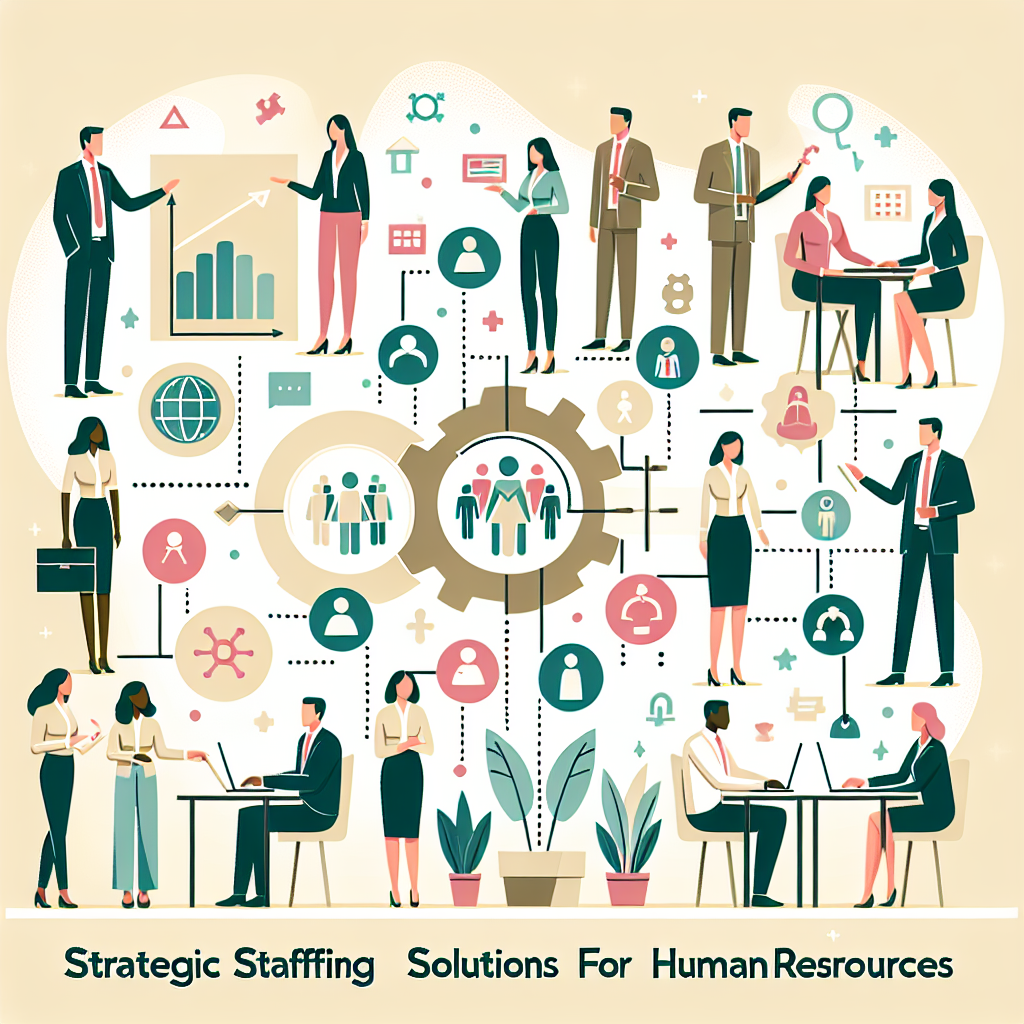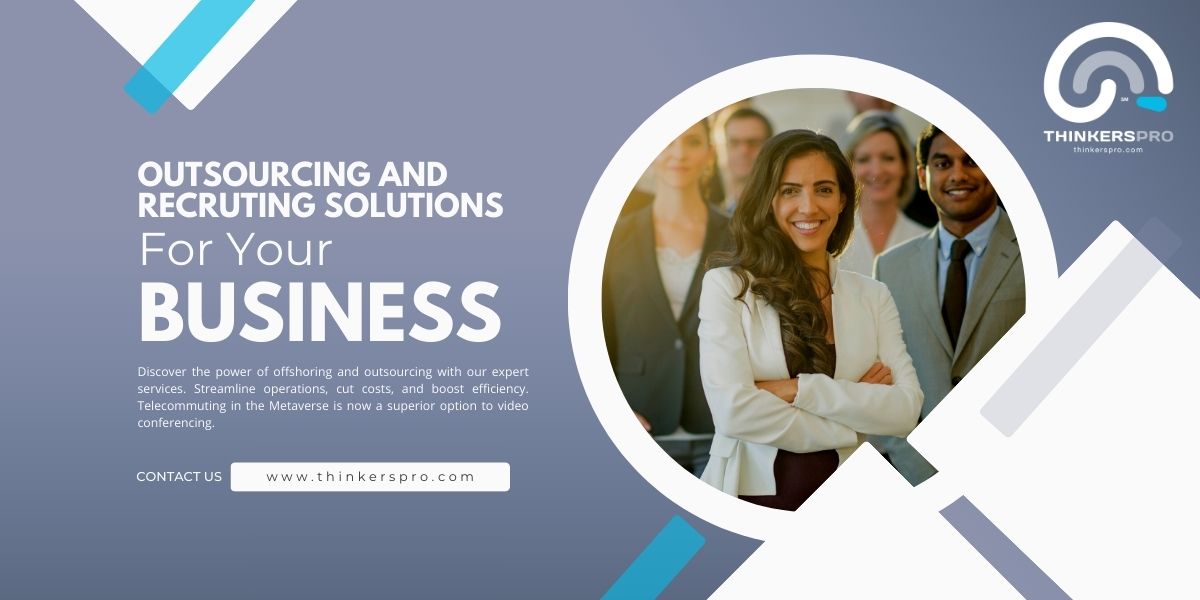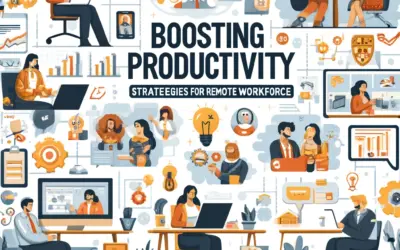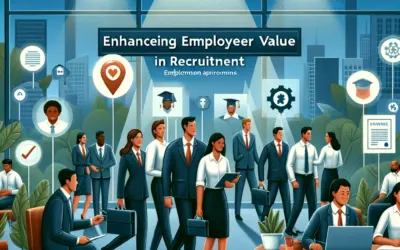Understanding the Core Principles of Strategic Staffing in HR
Strategic staffing in Human Resources (HR) is the backbone of a company’s workforce planning. It goes beyond merely filling positions to encompass matching the right individual with the right job, at the right time, and in a way that aligns with the organization’s overall goals. This dynamic process involves several key principles that ensure a smooth and efficient staffing strategy.
Workforce Analysis and Planning
Workforce analysis is the first critical step in strategic staffing. It involves assessing the current personnel structure and pinpointing skills that are present, as well as those that will be needed in the future. HR professionals must consider multiple factors, including demographic trends, retirements, and the evolving nature of job roles. By understanding these aspects, companies can create a comprehensive staffing plan that looks ahead to future needs, prevents skill shortages, and prepares for generational workforce shifts.
Recruitment and Selection
Effective recruitment is a targeted approach that seeks to attract high-quality candidates who not only possess the right skills but also fit the company culture. The selection process is equally important, focusing on assessing a candidate’s potential for growth and long-term contribution to the organization. Diverse recruitment channels, clear role definitions, and consistent selection criteria are the hallmarks of a robust staffing framework, designed to tap into the best talent on the market.
Employee Development and Retention
Once the right people are on board, investing in employee development is essential to retain top talent and maintain a competitive edge. This includes ongoing training, mentorship programs, and career pathing, which allow employees to build their skills and advance within the company. Retention efforts also hinge on recognizing employee achievements, competitive compensation packages, and fostering a positive work environment. By valuing employees, organizations encourage loyalty and reduce costly turnover rates.
By embracing these core principles, companies can effectively navigate the complexities of staff management, adapt to changing business landscapes, and secure a workforce that drives organizational success. Strategic staffing is not just about filling vacancies; it’s about creating an adaptive workforce strategy that supports growth and innovation for years to come.
Implementing Effective Talent Acquisition Techniques
Understanding Talent Acquisition Fundamentals
Talent acquisition is more nuanced than traditional hiring. It’s about finding the right person for the right job at the right time. The process involves sourcing, attracting, interviewing, hiring, and onboarding employees. It’s strategic, focusing not just on filling positions today but also on planning for the needs of tomorrow. Effective talent acquisition is rooted in understanding your organization’s long-term goals and the competencies that are necessary for success in your industry.
The Role of Employer Branding
A strong employer brand is vital in attracting top candidates. It communicates your company’s values, culture, and mission. Utilizing social media, crafting compelling job descriptions, and showcasing employee testimonials can enhance your employer brand. The goal is to not only attract candidates but to attract the right candidates who align with your organizational ethos.
Streamlining the Recruitment Process
The recruitment process should be efficient and candidate-friendly. Lengthy applications or unclear role expectations can detract from candidate experience and deter top talent. It’s crucial to balance thoroughness with respect for the candidate’s time. Providing clear timelines and regular communication keeps candidates engaged and reflects positively on your company.
Employing Modern Recruitment Technologies
Advances in technology have revolutionized the way organizations find talent. Artificial Intelligence (AI) and machine learning can streamline candidate sourcing by automatically matching job requirements with candidate profiles. Utilizing applicant tracking systems (ATS) can help in organizing and managing applications efficiently. It’s beneficial to invest in these technologies to aid your talent acquisition strategy.
Utilizing Social Media and Job Platforms
Social media platforms and professional networking sites like LinkedIn are goldmines for recruiters. They offer a wealth of information and the ability to reach passive candidates who aren’t actively seeking a new job but may be the perfect fit for your organization. Crafting engaging content such as employee spotlights or behind-the-scenes looks at your company can help spark interest in your open roles.
Leveraging Data Analytics
Data analytics can significantly enhance the effectiveness of talent acquisition strategies. By analyzing recruitment data, organizations can uncover insights into sourcing channels that yield the best candidates, the success rates of different recruiting tactics, and areas where the hiring process can be improved. This data-driven approach ensures continuous improvement and a competitive edge in talent acquisition.
Optimizing the Candidate Experience
Creating a positive candidate experience is crucial. From the initial job post to the final decision communication, every interaction a candidate has with your company shapes their perception and your ability to attract future talent. Timely communication, feedback after interviews, and a straightforward application process are components that lead to a positive candidate experience. Remember, candidates are potential ambassadors of your employer brand, regardless of whether they get the job.
Ensuring Diversity and Inclusion
Diversity and inclusion should be integral elements of your talent acquisition strategy. Diverse teams lead to improved creativity, problem-solving, and competitiveness. Ensure that your job advertisements are inclusive, using language that is welcoming to all candidates. Additionally, consider implementing blind hiring practices and diverse interview panels to minimize unconscious bias and promote fairness in the selection process.
Building Talent Pools
Talent pools are databases of potential candidates who could fill future roles within your organization. They’re built from past applicants, referrals, and sourced candidates. Maintaining a talent pool means you have a head start when new positions become available, and it reflects a proactive approach to strategic talent planning. Cultivating relationships with pool members through networking and regular communication keeps your company top of mind for top talent.
Fostering Continuous Learning and Development
An organization committed to learning and development is more likely to attract and retain high-caliber talent. Investing in training programs and career development opportunities can ensure employees feel valued and see a future within the company. This forward-thinking approach aligns with the aspirations of today’s workforce and strengthens your position as an employer of choice.
Creating Clear Career Pathways
Understanding and communicating the potential career paths available within your organization can give candidates a sense of security and ambition. When individuals can envision their growth and development within a company, their engagement and productivity often increase. Clear career pathways are essential in not only acquiring talent but also in nurturing and retaining that talent long-term.
Adapting to the Evolving Job Market
The job market is in constant flux, impacted by new technologies, shifting demographics, and global trends. It is vital for companies to stay ahead of the curve by adapting their talent acquisition strategies accordingly. This may involve re-skilling staff, exploring flexible work arrangements, or broadening your search to global talent pools. Staying agile in the face of change ensures that your organization can meet the evolving expectations of both the market and prospective employees.
Optimizing Employee Retention Through Strategic Staffing
Understanding the Importance of Employee Retention
Retaining skilled staff is a vital component of a thriving business. When employees stay longer, they bring invaluable experience and continuity to the team. High turnover rates, on the other hand, can lead to increased training costs and knowledge gaps. That’s why understanding the importance of employee retention is the first step towards maintaining a loyal and proficient workforce. It’s not just about keeping employees—it’s about fostering an environment where they want to stay.
Identifying Core Motivators for Employees
A critical element in employee retention is recognizing what motivates your staff. This might include career advancement opportunities, a positive work environment, competitive salaries, or meaningful work. By addressing these core motivators, employers can create a more engaging and satisfying workplace.
Fostering a Positive Work Environment
A positive work environment is a cornerstone of strategic staffing and employee retention. Cultivating an atmosphere where respect, communication, and collaboration are prioritized can significantly improve staff morale. Employees are more likely to stay with a company that values their contributions and promotes a healthy work-life balance.
Implementing Effective Communication Channels
Transparent and effective communication is integral to a positive workplace. Open dialogues between management and staff, as well as among peers, can lead to a more cohesive team dynamic. Encouraging feedback and providing regular updates on company goals and changes ensures that every team member feels informed and involved.
Creating Clear Career Pathways
Another strategy for retaining top talent is to provide clear career pathways within the organization. Employees who see a future for themselves and can envision growth opportunities are more likely to remain committed to the company. This involves not only setting out potential career trajectories but also offering the necessary training and mentoring to help employees advance.
Investing in Professional Development
Investment in professional development signifies a company’s commitment to its workers’ futures. Workshops, courses, and certifications can empower your employees with new skills and knowledge, thereby enhancing their performance and satisfaction. Moreover, these opportunities can improve the overall expertise within your business, fostering innovation and a competitive edge.
Deploying Strategic Recruitment Techniques
Finally, strategic recruitment is vital for long-term employee retention. Attracting the right talent with the right skills and cultural fit ensures a smoother integration into the team and better retention rates. It’s important to articulate a clear employer brand and value proposition to attract candidates who resonate with your company’s vision and ethics.
Leveraging Data-Driven Hiring Practices
Embracing data-driven hiring practices can enhance recruitment strategies significantly. By analyzing patterns in successful employee histories, businesses can refine their recruitment criteria to identify candidates who are more likely to stay and thrive long-term.
By addressing these focal points, companies can optimize employee retention, benefiting from a skilled, committed workforce that drives the business forward. Strategic staffing is not just about finding the right employees but also about nurturing their development and ensuring their satisfaction in the long run.
Innovative Technologies Reshaping Staffing Solutions in HR
Artificial Intelligence and Machine Learning in Recruitment
Emerging technologies, spearheaded by Artificial Intelligence (AI) and Machine Learning (ML), are transforming the approach to staffing in Human Resources (HR). AI-powered tools are enabling HR professionals to automate the screening process, swiftly parsing through vast numbers of resumes to identify ideal candidates. By learning from past hiring decisions, these technologies can also predict which applicants are most likely to succeed in a given role. This not only accelerates the recruitment cycle but also enhances the quality of hires.
Automated Resume Screening
Automated resume screening tools use AI to assess a candidate’s experience and skills against job requirements. This technology allows for a fairer screening process as it operates on a predetermined set of criteria, minimizing unconscious biases that may influence human decision-making.
AI-Driven Candidate Matching
ML algorithms can dynamically match candidates to job openings by analyzing various factors, including previous job performance, cultural fit, and career progression. This holistic approach to candidate assessment helps HR to make more informed staffing decisions.
Blockchain Technology for Credential Verification
In today’s digital age, verifying the authenticity of applicants’ credentials can be cumbersome and time-consuming. Blockchain technology offers a solution, providing a secure and immutable ledger for educational and professional qualifications. By leveraging blockchain, HR departments can instantly verify credentials without needing to contact multiple institutions or previous employers, thereby streamlining the staffing process and ensuring a high trust level in the integrity of potential hires.
Enhanced Security and Privacy
The decentralized nature of blockchain ensures that candidate information is protected and tamper-proof, thus offering heightened security and privacy for both the job seeker and the organization.
Cloud-Based Staffing Platforms and Big Data Analytics
Cloud computing has revolutionized many aspects of business, and staffing solutions are no exception. Cloud-based platforms facilitate seamless collaboration among hiring teams, no matter where they are located. Moreover, through Big Data analytics, HR can glean actionable insights from extensive datasets, such as workforce trends, employee retention rates, and the effectiveness of different recruitment channels. This data-driven approach empowers HR to make strategic decisions that align with the organization’s broader goals.
Scalability and Flexibility
The scalable nature of cloud platforms ensures that HR departments can adjust their staffing tools and techniques as the company grows or as staffing needs change. This flexibility is essential in fast-paced business environments.
Integration of Virtual Reality (VR) in Staff Training
Virtual Reality (VR) is not only forging new paths in entertainment and education but also in HR staff training. VR simulations allow for immersive role-playing scenarios, hands-on skill development, and realistic workplace simulations that can prepare employees for their roles more effectively than traditional training methods. The use of VR in training can improve engagement, speed up the learning process, and provide a safe space for employees to practice skills without the risk of real-world consequences.
Challenges and Solutions in Global Staffing Strategies
Challenges in Global Staffing Strategies
As the world becomes increasingly interconnected, businesses are looking to global staffing strategies to leverage diverse talent pools and drive growth. However, this approach comes with its own set of complex challenges. One of the main issues is navigating the intricate legal and regulatory frameworks across different countries. Firms must comply with local labor laws, which can vary significantly and change frequently. Additionally, cultural differences pose a challenge, as organizations must understand and respect a myriad of cultural norms and practices when staffing globally.
Cultural and Communication Barriers
Working with a global workforce can sometimes lead to misunderstandings or communication gaps due to language barriers and cultural differences. It is vital for companies to invest in cultural training and language support for their employees. This ensures that all staff members can collaborate effectively, no matter their geographic location.
Legal Compliance and Operational Complexity
Another major challenge facing global staffing is adhering to the legal requirements of each country. Complex visa requirements, payroll regulations, and employment laws require a deep understanding and often necessitate local expertise. To manage these complexities, businesses can partner with global employment organizations that specialize in navigating international staffing hurdles.
Solutions in Global Staffing Strategies
Despite the challenges, there are sustainable solutions that can help businesses thrive in the global marketplace. One effective approach is implementing robust training and development programs that address cultural sensitivity and communication skills. Companies should establish clear communication channels and standard operating procedures that are sensitive to the time zones and work styles of various countries. Embracing technology solutions such as remote collaboration tools can bridge the physical distance between international teams.
Leveraging Local Expertise
Engaging local staffing partners can provide valuable insight into the regional market and help navigate the legal intricacies. These partners can assist in streamlining compliance processes and provide on-the-ground support for international employees, thus reinforcing the company’s global staffing framework.
Fostering an Inclusive Work Environment
Creating an inclusive work environment is paramount. Employers should encourage a company culture that celebrates diversity, supports equity, and promotes inclusion. By fostering such an environment, businesses can ensure that all staff members feel valued and part of a cohesive global team, which in turn can lead to higher employee engagement and productivity. In conclusion, while global staffing presents certain challenges, organizations can overcome these through careful planning, cultural sensitivity, and the strategic use of technology and local expertise.













0 comentarios